On Thursday, February 27th , an intriguing connection emerges with the timeless era of the Dwapara Yuga, the third epoch in the cosmic cycle of Yugas according to Hindu cosmology. This date coincides with Phalguna Amavasya , a sacred New Moon day in the Hindu lunar calendar, offering a unique opportunity to reflect on the spiritual and historical essence of this significant age.
Significance & Importance of Dwapara Yuga
The Dwapara Yuga, often described as a period of balance between virtue and vice, is characterized by humanity's gradual shift away from absolute righteousness (as seen in Satya Yuga) and the onset of greater moral struggles. It is a time marked by the advent of great divine personalities, including Bhagwan Krishna, whose teachings in the Bhagavad Gita continue to inspire seekers across the ages. Dwapara Yuga invites us to delve into its profound lessons, reflect on its historical narratives, and draw spiritual wisdom to navigate the challenges of the modern era. This article explores the essence of Dwapara Yuga, its cultural significance, and how its timeless values resonate even today.
The Dwapara Yuga offers valuable lessons for contemporary life:
- The Balance of Dharma and Adharma: This age reflects the ongoing battle between virtue and vice, mirroring the challenges faced in modern times.
- Spiritual Guidance: It underscores the need for spiritual anchors, as provided by Bhagwan Krishna’s teachings, to navigate life’s complexities.
- Divine Connection: It reminds us of the enduring importance of seeking divine grace and practicing devotion as pathways to harmony and enlightenment.
Dwapara Yuga ia an opportunity to embrace its lessons, reflecting on its timeless values, and cultivating the strength to uphold dharma in our daily lives. This day is a powerful reminder of the eternal cycles of time and the spiritual wisdom that guides us through every era.
Stories of Dwapara Yuga
The Dwapara Yuga, the third epoch in Hindu cosmology, was a period rich in divine narratives and spiritual celebrations that emphasized devotion, dharma (righteousness), and the triumph of good over evil. Many festivals and stories from this era continue to inspire and guide humanity.
Here are some key stories associated with the Dwapara Yuga festivals:
Govardhan Puja: The Lifting of Govardhan Hill
One of the most celebrated festivals from the Dwapara Yuga is Govardhan Puja , which commemorates Bhagwan Krishna’s divine act of lifting Govardhan Hill .
The Story :
The people of Vrindavan used to worship Indra, the god of rain, to ensure good harvests. Bhagwan Krishna, however, encouraged them to worship Govardhan Hill , which provided them with fertile land, pastures, and sustenance. This enraged Indra, who unleashed a torrential storm to punish them. Krishna, using his divine power, lifted Govardhan Hill on his little finger to shelter the villagers and their cattle from the storm. After seven days, Indra realized Krishna’s divinity and ceased the rain, seeking forgiveness.
Significance :
The festival highlights Krishna’s teachings on humility, self-reliance, and the importance of worshiping nature as a source of sustenance.
Janmashtami: The Birth of Bhagwan Krishna
Another significant festival from the Dwapara Yuga is Janmashtami , celebrating the birth of Bhagwan Krishna, who incarnated to restore dharma during this age.
The Story :
Born in the prison of King Kansa, Krishna’s arrival marked the end of tyranny and adharma. His life is filled with stories of divine play (leelas), such as subduing the serpent Kaliya , lifting Govardhan Hill, and spreading the message of the Bhagavad Gita .
Significance :
Janmashtami celebrates Krishna’s role as the protector of dharma and the upholder of divine justice. It reminds devotees of his divine presence and the ultimate victory of good over evil.
Kurukshetra: The Battlefield of Dharma
Though not a traditional festival, the events of the Mahabharata , especially the Bhagavad Gita , form a cornerstone of Dwapara Yuga's spiritual legacy.
The Story :
During the epic battle of Kurukshetra, Bhagwan Krishna delivered the Bhagavad Gita to Arjuna, resolving his moral dilemmas about fighting against his own kin. Krishna’s teachings emphasized selfless action (karma yoga), devotion (bhakti yoga), and the pursuit of wisdom (jnana yoga).
Significance :
The Bhagavad Gita is celebrated during various Hindu festivals and spiritual gatherings, offering timeless lessons for living a life of purpose and righteousness.
Ratha Yatra: The Festival of Chariots
The origins of Ratha Yatra trace back to Dwapara Yuga, celebrating Krishna’s journey with his siblings, Balabhadra (Balarama) and Subhadra, to meet the people of Vrindavan.
The Story :
After Krishna became the ruler of Dwarka, his devotees in Vrindavan longed for his presence. To fulfill their wish, Krishna, along with his siblings, traveled in a grand chariot to Vrindavan, symbolizing his eternal bond with his devotees.
Significance :
Ratha Yatra symbolizes divine love, reunion, and the accessibility of the divine to all, regardless of status or background.
The Rajasuya Yajna: A Festival of Dharma
The Rajasuya Yajna was a grand sacrificial ritual performed by Yudhishthira, the eldest Pandava, after establishing dharma across the land.
The Story :
As part of the yajna, Yudhishthira sought the guidance of Bhagwan Krishna, who helped him achieve success. The ritual was marked by Krishna’s humility when he chose to wash the feet of guests, demonstrating his commitment to service and dharma.
Significance :
This story emphasizes the virtues of humility, service, and the importance of divine guidance in upholding dharma.
The festivals and stories from the Dwapara Yuga reflect timeless values such as devotion, humility, and the pursuit of righteousness. Celebrations like Govardhan Puja, Janmashtami, and Ratha Yatra continue to inspire millions, reminding us of the divine acts of Bhagwan Krishna and the eternal principles of dharma.
These stories not only serve as a connection to our spiritual heritage but also provide guidance on living a meaningful and virtuous life in the modern era.
Festival Date, Time, Muhurat & Tithi
Dwapara Yuga Day will be observed on Thursday, February 27th, 2025.
The observance aligns with Phalguna Amavasya (New Moon Day) as per the Hindu lunar calendar, symbolizing the timeless connection to the Dwapara Yuga and its spiritual legacy.
Key Timings for Dwapara Yuga Observance 2025:
- Amavasya Tithi Begins: 02:34 AM on February 27th, 2025 (IST)
- Amavasya Tithi Ends: 04:22 AM on February 28th, 2025 (IST)
Special Muhurats for Dwapara Yuga Day:
-
Spiritual Reflection and Meditation Time:
06:10 AM to 08:30 AM (IST)
Duration : 2 Hours 20 Minutes -
Sacred Offerings Muhurat:
11:50 AM to 01:45 PM (IST)
Duration : 1 Hour 55 Minutes
Note: Devotees begin their Dwapara Yuga rituals at sunrise, making it a key time for the day's observances. Sunrise and sunset vary by region and date due to India's geographical diversity. For exact timings, refer to local astronomical data.
What to do on Dwapara Yuga?
Dwapara Yuga is a time to reflect on the values, teachings, and divine narratives associated with this epoch of Hindu cosmology. Coinciding with Phalguna Amavasya (New Moon Day), it provides a unique opportunity for spiritual reflection, ancestral offerings, and devotion to the timeless principles of dharma and wisdom. This day is an occasion to connect deeply with the virtues upheld during the Dwapara Yuga, particularly through the teachings of Bhagwan Krishna.
Morning Puja
The day begin with a sacred bath to purify the body and mind, followed by morning puja (worship). Devotees can offer flowers, fruits, milk, and bel leaves to their chosen deities, particularly Bhagwan Krishna and Bhagwan Shiva.
Mantra Chanting
Bhagwan Krishna, the presiding deity of Dwapara Yuga, represents divine wisdom and the upholder of dharma, while Bhagwan Shiva embodies the eternal witness of cosmic cycles. Chanting sacred mantras such as “Om Namo Bhagavate Vasudevaya” or “Om Namah Shivaya” invokes divine blessings.
Shraddha and Tarpana
This day is also auspicious for honoring ancestors, as Phalguna Amavasya is traditionally associated with performing shraddha and tarpana (ancestral offerings). By expressing gratitude and seeking the blessings of ancestors, devotees strengthen their connection to their lineage and ensure harmony in their lives. It is a profound act of dharma that aligns with the spiritual significance of the Dwapara Yuga.
Scriptural Reading
Spending time with sacred texts is another meaningful way to celebrate this day. The Bhagavad Gita , a cornerstone of Dwapara Yuga’s spiritual legacy, offers timeless wisdom on life, duty, and devotion. Reading passages from the Mahabharata , the great epic that unfolded during this epoch, provides insights into the values of righteousness and the consequences of moral and ethical choices. Such reflections deepen one’s understanding of dharma and strengthen one’s resolve to live virtuously.
Vrat and Meditation
Fasting is a powerful practice on Dwapara Yuga Day, symbolizing self-discipline and devotion. Many devotees choose to abstain from grains and consume fruits and milk, using the day to focus on spiritual practices like meditation and prayer. Silent meditation, in particular, helps align the mind and soul with the higher vibrations of this auspicious day, fostering inner peace and enlightenment.
Acts of Charity
The day is also an ideal time to practice charity and compassion. Acts such as donating food, clothes, or resources to those in need reflect the dharma upheld in Dwapara Yuga. Supporting gaushalas (cow shelters) or feeding cows is considered highly auspicious, as Bhagwan Krishna’s connection with cows symbolizes nurturing and care for all living beings. These acts of giving not only benefit others but also purify the heart of the giver.
Family Gathering
Celebrations of Dwapara Yuga Day can also include cultural and family-oriented activities. Narrating stories from Krishna’s life or the Mahabharata brings families together in a shared spiritual journey. Singing devotional songs and bhajans creates a divine atmosphere, reinforcing the collective spirit of devotion. Simple acts like lighting a ghee lamp in the evening symbolize the triumph of wisdom over ignorance, echoing the eternal lessons of this yuga.
Finally, Dwapara Yuga Day is a reminder to honor nature and live harmoniously with the environment. Inspired by Krishna’s worship of Govardhan Hill, devotees can plant trees, conserve resources, or simply spend time appreciating the natural world. These practices reflect the values of balance and respect for creation that are central to this epoch. By practicing devotion, seeking wisdom, and upholding dharma, we align ourselves with the divine energy that shaped the Dwapara Yuga, drawing inspiration to navigate the challenges of modern life with grace and righteousness.
Dwapara Yuga Festival Puja Vidhi (Puja Procedure)
The Dwapara Yuga Festival Puja can be performed with devotion and simplicity, focusing on connecting with the divine energy and the timeless principles of dharma. Here is a step-by-step guide to conducting a simple puja:
Preparation for Puja
Cleanse Yourself and the Puja Space :
Take a bath early in the morning and wear clean, modest clothing. Clean the puja area thoroughly and arrange all necessary items in a serene, quiet space.
Set Up the Puja Altar :
- Place idols or pictures of Bhagwan Krishna (as the presiding deity of Dwapara Yuga) and Bhagwan Shiva (the eternal witness of cosmic cycles) on a clean cloth.
- Keep a Shiva Lingam , if available.
- Arrange offerings like fresh flowers, fruits, milk, honey, bel leaves, sandalwood paste, and incense sticks.
Puja Procedure
Lighting the Lamp :
Begin the puja by lighting a ghee lamp and incense sticks, symbolizing the dispelling of ignorance and invoking divine energy into the space.
Invocation (Dhyana) :
Sit in a meditative posture, close your eyes, and chant “Om Namo Bhagavate Vasudevaya” or “Om Namah Shivaya” to invoke the presence of Bhagwan Krishna and Bhagwan Shiva. Visualize their divine forms and seek their blessings.
Offering to the Deities (Upachara) :
- Abhishekam (Bathing the Deities): If you have a Shiva Lingam, perform abhishekam by pouring water, milk, and honey while chanting Shiva mantras like “Om Namah Shivaya.
- Decorate the Deities: Offer sandalwood paste, kumkum (vermilion), and flowers to Bhagwan Krishna and Shiva. Place bel leaves on the Shiva Lingam.
- Naivedya (Food Offering): Offer fruits, sweets, and other food items as prasad, symbolizing devotion and gratitude.
- Chanting Mantras : Recite sacred mantras or slokas like the Maha Mrityunjaya Mantra or passages from the Bhagavad Gita , focusing on devotion and spiritual connection.
- Aarti (Lighting Ritual) : Perform aarti with a lit camphor or ghee lamp, moving it in circular motions in front of the idols while chanting Krishna or Shiva bhajans.
Post-Puja Practices
Meditation and Reflection :
Sit silently after the puja, meditating on the qualities of Krishna and Shiva, such as wisdom, compassion, and dharma. Reflect on their teachings and how they can guide your life.
Prasad Distribution :
Share the prasad with family and friends, fostering a spirit of unity and devotion.
Charity and Acts of Kindness :
Donate food, clothes, or other resources to the needy. Feeding cows or contributing to gaushalas is especially auspicious.
Dwapara Yuga Festival Puja Vidhi is a heartfelt way to honor the divine principles of the epoch, fostering spiritual growth and deeper connection to the timeless values of Bhagwan Krishna and Bhagwan Shiva.
Dwapara Yuga Puja Mantras
Chant this mantra to invoke Bhagwan Krishna's divine presence:
“Om Namo Bhagavate Vasudevaya”
(Salutations to Bhagwan Krishna, the divine sustainer of the universe.)
Maha Mrityunjaya Mantra
“Om Tryambakam Yajamahe Sugandhim Pushtivardhanam,
Urvarukamiva Bandhanan Mrityor Mukshiya Maamritat.”
(We meditate on the three-eyed Bhagwan Shiva who sustains all beings. May he liberate us from death and grant immortality.)
Dwapara Yuga Vrat Vidhi (Fasting Procedure)
Dwapara Yuga Vrat is a spiritual practice undertaken to honor the divine significance of the Dwapara Yuga and to cultivate discipline, devotion, and inner purification. This fasting procedure is simple yet profound, allowing devotees to connect deeply with Bhagwan Krishna, the presiding deity of this epoch, and to reflect on the timeless principles of dharma.
The vrat begins with preparation on the evening before the fasting day. Devotees are encouraged to clean their homes and the space where they will perform the puja. This act symbolizes the removal of negative energies and sets the tone for a pure and focused mind. Consuming light foods, such as fruits and milk, the night before helps in mentally and physically preparing for the fast. The devotee may spend the evening meditating or reading spiritual texts like the Bhagavad Gita to imbibe the teachings of Bhagwan Krishna.
On the morning of the vrat, devotees wake up early, take a bath, and wear clean clothes. The day starts with a prayer to Bhagwan Krishna or Bhagwan Shiva, invoking their blessings for spiritual growth and protection. Offerings such as flowers, fruits, and water are placed at the altar, and a lamp or incense is lit to create a sacred atmosphere. Chanting mantras like 'Om Namo Bhagavate Vasudevaya' or 'Om Namah Shivaya' helps in focusing the mind and channeling divine energy.
Throughout the day, devotees observe a fast based on their capacity. Some may undertake a complete fast, abstaining from all food and water, while others may follow a partial fast, consuming fruits, milk, and water. The intention behind the fast is more important than the strictness of its observance; it is a practice of self-discipline, devotion, and surrender. During the fast, devotees refrain from distractions and instead dedicate their time to meditation, chanting, and reflecting on the virtues upheld during the Dwapara Yuga.
As the day progresses, devotees may engage in reading scriptures like the Bhagavad Gita or narrating stories from the Mahabharata to deepen their understanding of dharma and divine wisdom. The fast is concluded in the evening after offering prayers and distributing prasad, which symbolizes the blessings of the divine. This simple yet spiritually enriching practice allows individuals to align themselves with the teachings of the Dwapara Yuga and to find inner peace and clarity in their spiritual journey.
Dwapara Yuga Vrat Katha (Traditional Fasting Story)
The Dwapara Yuga Vrat Katha revolves around the values of dharma, devotion, and divine intervention, emphasizing the transformative power of sincere faith and righteous actions. This traditional story, often recited during fasting, illustrates how devotion and surrender to the divine can overcome even the most challenging circumstances.
In the age of Dwapara Yuga, there lived a noble king named Dharmajit, who was renowned for his adherence to dharma (righteousness) and justice. Despite his virtuous rule, the king faced immense hardships, including droughts, famines, and unrest in his kingdom. Concerned for his people, Dharmajit sought guidance from the wise sages in his court, who advised him to undertake a special vrat (fast) dedicated to Bhagwan Krishna, the presiding deity of Dwapara Yuga.
The king, along with his family and subjects, observed the vrat with unwavering devotion. They fasted from dawn to dusk, meditated on the teachings of Krishna, and chanted mantras such as 'Om Namo Bhagavate Vasudevaya.' Throughout the day, the king performed selfless acts of charity, feeding the poor, caring for the animals, and ensuring that everyone in his kingdom participated in the vrat with sincerity.
As the day progressed, Dharmajit began narrating stories from the life of Krishna, reminding his people of the divine play (leelas) that Krishna performed to uphold dharma. He recounted how Krishna lifted Govardhan Hill to protect his devotees, how he delivered the teachings of the Bhagavad Gita to Arjuna, and how he stood as the eternal guide and protector of those who surrendered to him.
Pleased with the collective devotion and sincerity of the king and his people, Bhagwan Krishna appeared before Dharmajit in a radiant form. The Bhagwan blessed the king, promising to restore prosperity and harmony to his kingdom. True to his word, the rains returned, the lands flourished, and peace prevailed once again. Krishna reminded the king that fasting and devotion are not merely rituals but a means to align with divine will and foster harmony in the world.
This Vrat Katha teaches that faith, humility, and the observance of dharma can invoke divine grace, bringing peace and prosperity even in the most challenging times. Reciting this story during the Dwapara Yuga Vrat inspires devotees to embody the values of righteousness and devotion in their own lives. Through fasting, prayer, and service, one can cultivate a deeper connection with the divine and experience the transformative power of faith.
Puja Utensils, Essentials
Rudra Centre brings an extensive collection of Puja Articles which caters to all that is required for daily and special Puja Vidhis. We offer variants of designs and sizes in each category. The list includes handcrafted Puja Mandirs, Puja Pedestals, offering Bowls, Panchpatra, intricately carved Puja Thalis, Abhishek Vessels, in different materials, Pure Silver/German Silver articles like Kalash, set of Shodash Upachara and Several other Puja Articles, which we deliver at your doorstep.
Visit the complete collection: https://www.rudraksha-ratna.com/p/puja-articles
Krishna Yantra
Meditation on the Krishna Yantra can help in calming the mind, reducing stress, and fostering inner peace. It is believed to encourage spiritual growth and well-being by fostering a tranquil and harmonious environment. This Yantra bestows a person with mental stability, allowing him to remain cool, calm, and composed even in the most difficult and adverse circumstances, allowing him to make the right decisions.
Buy here: https://www.rudraksha-ratna.com/buy/krishna-yantra
Shiva Yantra
Shiva Yantra is one of the most desirable Yantra as its mere presence at home or workspace is auspicious and brings numerous benefits. Using and worshiping the Bhagawan Shiva Yantra is equivalent to worshiping Shiva Himself and bestows the person with increased awareness, peace, calmness, health, wealth, good fortune, fame, spiritual growth and happiness.
Buy here: https://www.rudraksha-ratna.com/buy/shiv-yantra
Conclusion
The Dwapara Yuga Festival is a profound opportunity to reconnect with the timeless values of dharma, devotion, and divine wisdom that characterized this cosmic age. Through fasting, prayer, and reflection, devotees are reminded of the teachings of Bhagwan Krishna, the guiding light of Dwapara Yuga, whose life exemplified the triumph of righteousness over adversity and the transformative power of selfless action.
By observing the vrat with sincerity and narrating stories from the Mahabharata and the Bhagavad Gita, participants deepen their spiritual understanding and strengthen their resolve to live in alignment with dharma. The festival emphasizes the importance of humility, compassion, and service, fostering a sense of unity and harmony within communities.
As the day concludes, the blessings of this sacred observance inspire devotees to carry the virtues of the Dwapara Yuga into their daily lives, striving for truth, wisdom, and a deeper connection with the divine. The festival serves as a timeless reminder that faith and righteous action can overcome any challenge, leading us closer to spiritual liberation and eternal peace.

-in-Astrology.jpg)

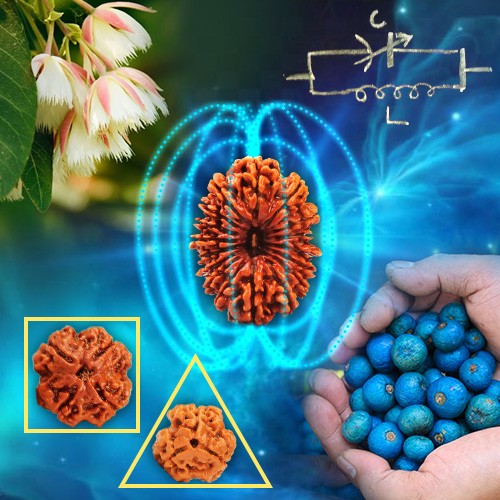
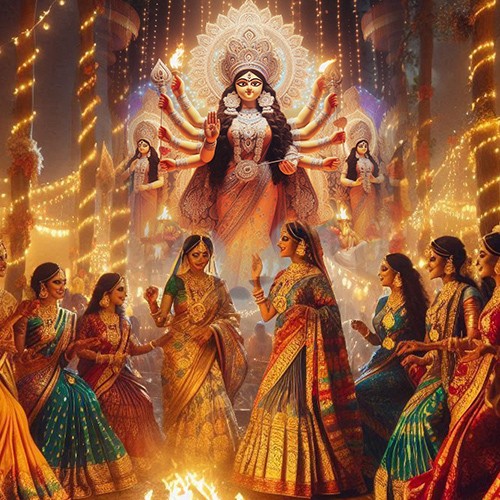


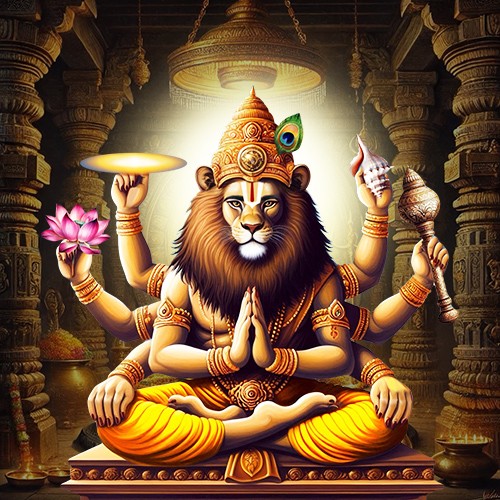

.jpg)
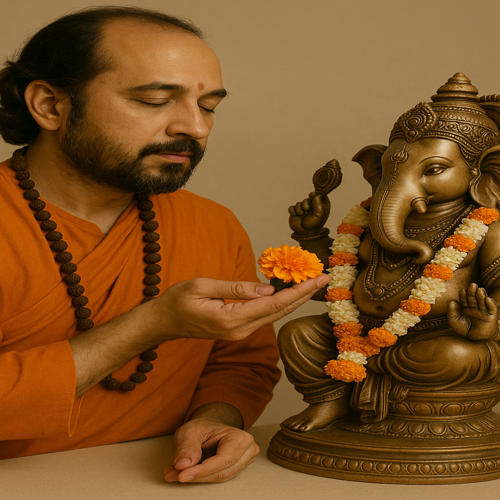
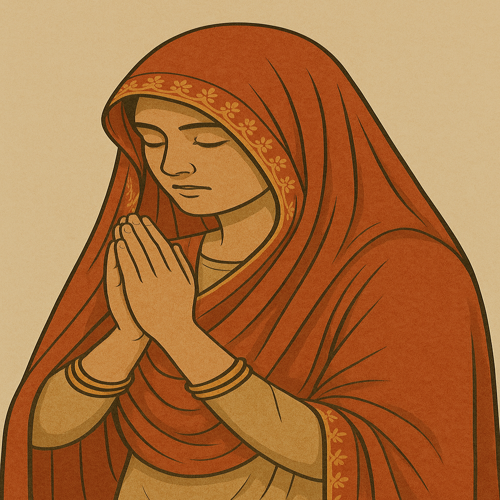
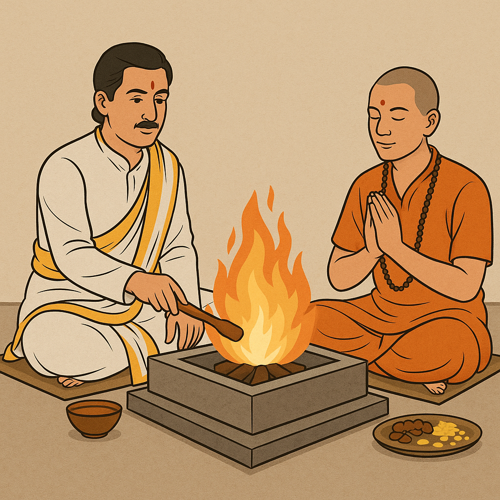
Comments 0
Leave your thought here